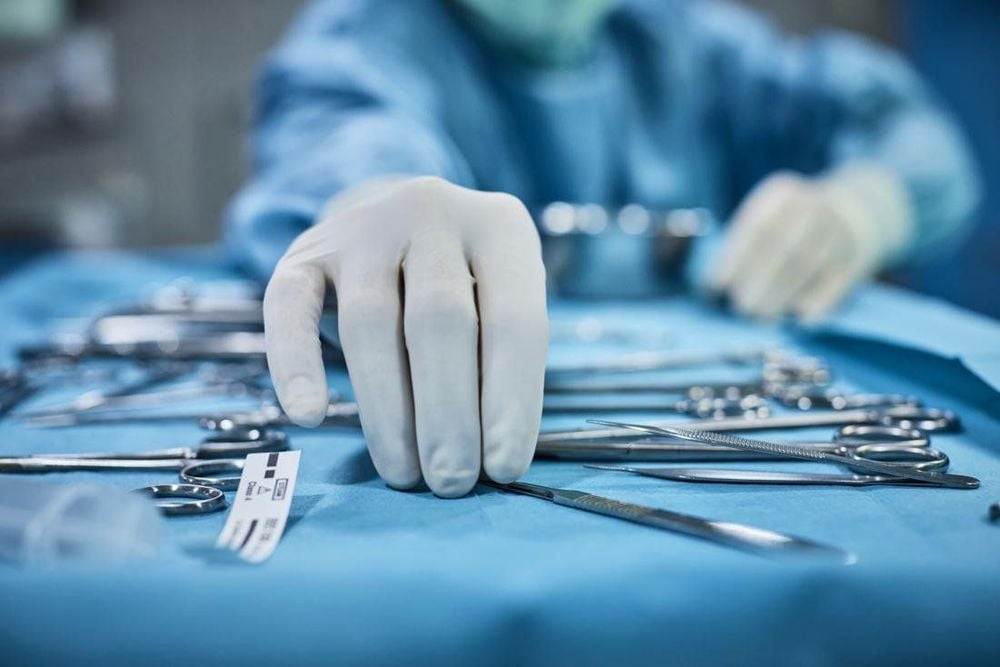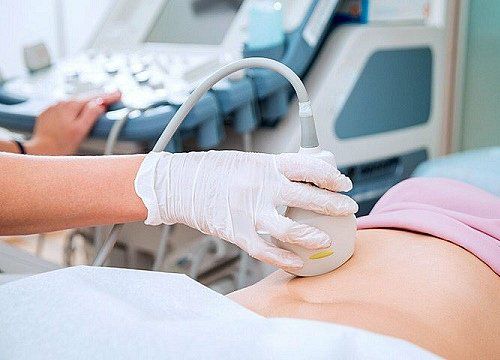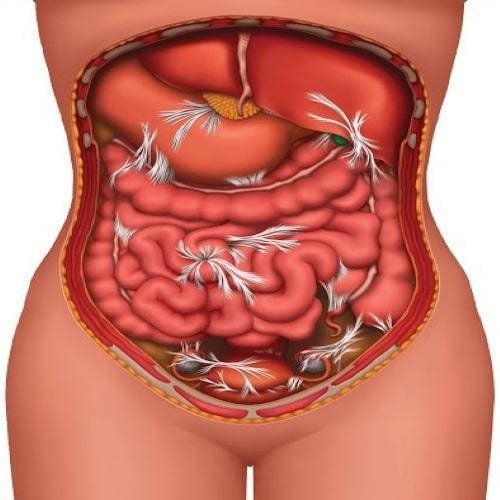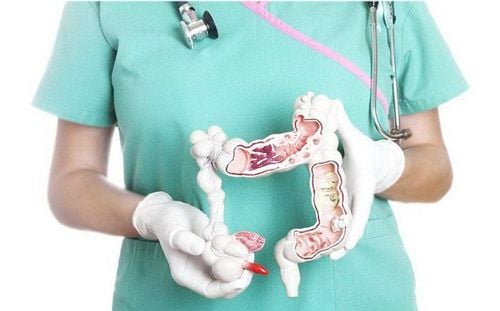This is an automatically translated article.
The article is professionally consulted by Master, Doctor Nguyen Thai Binh - Gastroenterologist - Department of General Surgery - Vinmec Ha Long International General Hospital.Postoperative intestinal adhesions are a common complication of many patients and should be treated early. If left for a long time, the food will be blocked, causing not only painful symptoms, affecting the quality of life but also can lead to dangerous complications, threatening the patient's life.
1. Subjects prone to intestinal adhesions after surgery
Patient after abdominal surgery. For example: appendectomy, cholecystectomy, intestinal anastomosis, caesarean section, kidney stone surgery... Patients after abortion procedures Patients with intra-abdominal infections. For example: small intestine inflammation, large intestine inflammation, appendicitis, metritis, ovary inflammation, urinary tract infection... In patients with Crohn's disease, there are bacterial infections that can produce abscesses inside or around. Intestinal wall diseases Syphilis, gonorrhea.... People with diseases: endometriosis, bleeding in the abdomen, cancer in the abdomen or pelvis...

2. What to do to detect intestinal adhesions after surgery
The specific symptoms of intestinal adhesions vary from person to person, depending on each person's condition, location of adhesions, and complications. In particular, the most characteristic symptom of intestinal adhesions includes:
Acute abdominal pain or chronic abdominal pain, the pain may appear often or occasionally. Cramping or pulling pain. If pain occurs after taking a deep breath, it may be attached to the liver If it hurts when stretching or stretching to reach for things on high, there may be intestinal adhesions Acute or chronic pelvic pain may be attached near the vagina. The patient will have pain during intercourse Pain due to nerve pulling of the ectopic viscera Anorexia, nausea, vomiting. Disorders associated with intestinal adhesions:
Abdominal pain Chronic pelvic pain Gastroesophageal reflux disease (GERD) Urinary retention or frequent urination Peristaltic abdominal pain Pain when walking, lying down, or sitting in certain positions Anemia Malnutrition due to anorexia Reduced quality of life Depression Tests to help detect intestinal adhesions:
Ultrasound: Detect adhesions in small intestine, colon X-ray: Detect adhesions in small intestine, large intestine computed tomography CT : Sometimes detect adhesions outside the intestines Magnetic resonance imaging MRI : Helps detect adhesions inside and outside the intestines and uterus Hysteroscopy: Detects adhesions in the uterus Laparoscopy : Easy to detect sticking outside the intestine

3. Complications due to intestinal adhesions
Intestinal adhesions after surgery, if not detected and treated promptly, can lead to dangerous complications such as:
Intestinal obstruction due to fibrous tissue leading to blockage inside the intestine, pulling the loop of intestine causing food blockage in the lumen intestine. Food obstruction can cause abdominal distension, loss of appetite, dry skin, dry mouth, frequent thirst, little urine, nausea, vomiting, abdominal pain, constipation, bowel full of fluid and gas, fever due to inflammation. Intestinal Necrosis: Intestinal adhesions can lead to twisting of the intestine along the axis of the intestine, causing blockage of blood vessels, affecting the blood supply to the intestine, and eventually causing necrosis of the intestine. Intestinal necrosis causes the patient to have symptoms such as: Severe abdominal pain, nausea, vomiting, abdominal swelling, rectal bleeding... Sticking to the vagina and baby's lips in women Infertility due to internal adhesions Fallopian tubes and uterus Ectopic pregnancy due to adhesions in the fallopian tubes
4. Prevention of intestinal adhesions after surgery
Prioritize the use of minimally invasive surgical techniques such as laparoscopic surgery During surgery, the doctor restricts handling of tissues. Close the abdomen with hypoallergenic sutures. Doctors use gloves containing talcum powder or starch when operating. Use wet gauze to limit the risk of drying the visceral surface. Attach a non-stick pad to separate organs during and after surgery. Cover the surface of the organs with a non-stick pad for 5-7 days to prevent the formation of sticky cords. The non-stick pads will break down in the body after about 1-2 weeks. Prevention of inflammation by intra-abdominal steroid injection... The doctor instructs the patient to exercise soon after surgery. Patient need to walk daily is a necessity for patients with intestinal adhesions after surgery. Not only good for health, walking also helps the patient's bowel movements to work better. The patient's diet should be reset, avoiding foods containing a lot of insoluble fiber such as bamboo shoots, spinach, melons... and fruits containing a lot of tannins such as guava, persimmon. ...These substances will be able to stick together and form residue, causing intestinal obstruction later. Vinmec International General Hospital is one of the hospitals that not only ensures professional quality with a team of doctors, modern equipment and technology, but also stands out for its examination, consultation and treatment services. comprehensive, professional disease; civilized, polite, safe and sterile medical examination and treatment space.
Master, Doctor Nguyen Thai Binh has more than 20 years of experience working in abdominal surgery. He is a former resident of Sainte Marguerite and Nord Hospitals (Marseille, France).
Please dial HOTLINE for more information or register for an appointment HERE. Download MyVinmec app to make appointments faster and to manage your bookings easily.














